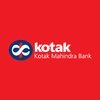
i
Standard
Chartered
Filter interviews by
Standard Chartered Senior Analyst Interview Questions and Answers
18 Interview questions
Macro variables can be created using the %LET statement in SAS programming.
Use %LET statement followed by the macro variable name and its value.
Macro variables can be created with or without quotes around the value.
Macro variables can be referenced using & symbol followed by the variable name.
Example: %LET var1 = 10; %LET var2 = 'Hello';
Example: %LET var3 = &var1.;
Adhoc reports requested by clients vary depending on their needs and objectives.
Client may request reports on sales performance, customer behavior, or market trends.
Reports may be in the form of tables, graphs, or charts.
Clients may also request customized reports based on specific criteria or filters.
Adhoc reports are usually requested on a one-time basis and may not follow a regular schedule.
CSV is a plain text file format while Excel is a binary file format.
CSV files contain data separated by commas while Excel files can contain multiple sheets and complex formatting.
CSV files can be easily opened in any text editor while Excel files require Microsoft Excel or a compatible program.
CSV files are smaller in size compared to Excel files.
CSV files are commonly used for data exchange between different sys...
Tableau can connect to SAS environment through ODBC or SAS/ACCESS Interface.
Tableau can use ODBC to connect to SAS environment and access data.
SAS/ACCESS Interface can also be used to connect Tableau to SAS environment.
Tableau can directly connect to SAS datasets and tables.
Tableau can also use SAS data connectors to access data from SAS environment.
What people are saying about Standard Chartered





Removing duplicate records using first. and last. functions.
Use the first. and last. functions to select the first and last occurrence of each record.
Sort the data by the key field to ensure that the first and last records are selected correctly.
Use the delete statement to remove the duplicate records.
Retain statement is used to store the value of a variable across iterations of a data step.
Retain statement is used to keep the value of a variable from one iteration of a data step to the next.
It is commonly used to calculate running totals or to keep track of previous values.
Retain statement is placed before the SET statement in a data step.
Example: retain total; total + sales; output;
Retain statement can also b...
SAS Macro is important for automating repetitive tasks and reducing code redundancy.
SAS Macro allows for parameterization of code, making it more flexible and reusable.
It can be used to automate repetitive tasks, saving time and effort.
Macro variables can be used to store and manipulate data, making code more efficient.
Macro functions can be used to perform complex calculations and data transformations.
SAS Macro c...
I present my report to my immediate supervisor and other relevant stakeholders.
Reports are presented to the immediate supervisor for review and approval.
Reports may also be presented to other stakeholders such as department heads or clients.
The presentation format may vary depending on the audience and purpose of the report.
We use a multi-step process to cleanse data, including removing duplicates, correcting errors, and standardizing formats.
Identify and remove duplicates
Correct errors such as misspellings and inconsistent data formats
Standardize data formats to ensure consistency
Validate data against external sources
Perform manual review and verification as needed
A calculative field in SAS is a field that is created by performing calculations on existing fields.
Calculative fields are created using SAS functions and expressions.
They can be used to perform complex calculations and transformations on data.
Examples include calculating averages, percentages, and ratios.
Calculative fields can be added to existing datasets or created as part of a data transformation process.
Standard Chartered Senior Analyst Interview Experiences
6 interviews found
I appeared for an interview in Apr 2024.
General cultural fit test
(1 Question)
- Q1. Basics of AML and KYC
(1 Question)
- Q1. Salary discussion
I applied via Naukri.com and was interviewed in Jul 2022. There were 3 interview rounds.

(13 Questions)
- Q1. What are the programing tools you know ? Rate yourself ( out of 5 )
- Ans.
I am proficient in several programming tools and rate myself highly in their usage.
Java - 5
Python - 4
SQL - 4
R - 3
MATLAB - 3
Tableau - 4
Excel - 5
- Q2. Important of SAS Macro.
- Ans.
SAS Macro is important for automating repetitive tasks and reducing code redundancy.
SAS Macro allows for parameterization of code, making it more flexible and reusable.
It can be used to automate repetitive tasks, saving time and effort.
Macro variables can be used to store and manipulate data, making code more efficient.
Macro functions can be used to perform complex calculations and data transformations.
SAS Macro can he...
- Q3. How to create macro variables?
- Ans.
Macro variables can be created using the %LET statement in SAS programming.
Use %LET statement followed by the macro variable name and its value.
Macro variables can be created with or without quotes around the value.
Macro variables can be referenced using & symbol followed by the variable name.
Example: %LET var1 = 10; %LET var2 = 'Hello';
Example: %LET var3 = &var1.;
- Q4. How to get different dataset from existing one ?
- Ans.
To get a different dataset from an existing one, you can filter, sort, aggregate, or transform the data.
Filter the data by selecting specific rows or columns based on certain criteria.
Sort the data by arranging it in ascending or descending order based on one or more columns.
Aggregate the data by grouping it based on one or more columns and calculating summary statistics.
Transform the data by applying mathematical or l...
- Q5. How to remove null values in numeric data types?
- Ans.
Null values in numeric data types can be removed using various methods.
Use the dropna() function in pandas library to remove null values.
Replace null values with a default value using fillna() function.
Use the interpolate() function to fill null values with interpolated values.
Use the drop() function to remove rows or columns with null values.
Use the notnull() function to filter out null values from the data.
- Q6. Difference between add and sum function
- Ans.
Add function is used to concatenate two or more strings or add numbers, while sum function is used to add numbers only.
Add function can be used to concatenate strings like 'hello' and 'world' to form 'helloworld'
Add function can also be used to add numbers like 2 and 3 to form 5
Sum function is used to add numbers only, like sum(2,3) will return 5
- Q7. Use of retain statement.
- Ans.
Retain statement is used to store the value of a variable across iterations of a data step.
Retain statement is used to keep the value of a variable from one iteration of a data step to the next.
It is commonly used to calculate running totals or to keep track of previous values.
Retain statement is placed before the SET statement in a data step.
Example: retain total; total + sales; output;
Retain statement can also be use...
- Q8. How to remove duplicate Records by using first. And last. ?
- Ans.
Removing duplicate records using first. and last. functions.
Use the first. and last. functions to select the first and last occurrence of each record.
Sort the data by the key field to ensure that the first and last records are selected correctly.
Use the delete statement to remove the duplicate records.
- Q9. How to get cumulative salary from a employee table ?
- Ans.
To get cumulative salary from an employee table, you can use SQL aggregate function SUM() along with GROUP BY clause.
Write a SQL query to select the employee ID and the sum of their salaries from the employee table.
Use the SUM() function to calculate the cumulative salary for each employee.
Group the results by employee ID using the GROUP BY clause.
The query should look like: SELECT employee_id, SUM(salary) FROM employe...
- Q10. How Tableau get data from SAS environment?
- Ans.
Tableau can connect to SAS environment through ODBC or SAS/ACCESS Interface.
Tableau can use ODBC to connect to SAS environment and access data.
SAS/ACCESS Interface can also be used to connect Tableau to SAS environment.
Tableau can directly connect to SAS datasets and tables.
Tableau can also use SAS data connectors to access data from SAS environment.
- Q11. What is calculative field in SAS
- Ans.
A calculative field in SAS is a field that is created by performing calculations on existing fields.
Calculative fields are created using SAS functions and expressions.
They can be used to perform complex calculations and transformations on data.
Examples include calculating averages, percentages, and ratios.
Calculative fields can be added to existing datasets or created as part of a data transformation process.
- Q12. What is blending in Tableau ?
- Ans.
Blending in Tableau is combining data from multiple sources to create a single view.
Blending allows for analysis of data from different sources without the need for merging.
Data sources can be blended based on common fields or dimensions.
Blending can be used to create a single view with data from multiple sources.
Example: Blending sales data from Excel with customer data from a database to analyze customer behavior.
Exa...
- Q13. What are the different filters in Tableau you use.
- Ans.
Tableau has various filters including dimension filters, measure filters, top N filters, wildcard filters, and context filters.
Dimension filters allow you to filter data based on specific dimensions such as category or region.
Measure filters filter data based on measures like sales or profit.
Top N filters allow you to filter the top or bottom N values based on a measure.
Wildcard filters filter data based on a specific ...
(9 Questions)
- Q1. What is Datamart and Data warehouse
- Ans.
Datamart is a subset of a data warehouse that is designed for a specific business unit or department.
Data warehouse is a centralized repository that stores data from various sources for business intelligence purposes.
Data warehouse is designed for enterprise-wide querying and analysis.
Datamart is a subset of a data warehouse that is designed for a specific business unit or department.
Datamart contains a subset of data ...
- Q2. What are the cleansing process you used
- Ans.
We use a multi-step process to cleanse data, including removing duplicates, correcting errors, and standardizing formats.
Identify and remove duplicates
Correct errors such as misspellings and inconsistent data formats
Standardize data formats to ensure consistency
Validate data against external sources
Perform manual review and verification as needed
- Q3. Difference between CSV and Excel file
- Ans.
CSV is a plain text file format while Excel is a binary file format.
CSV files contain data separated by commas while Excel files can contain multiple sheets and complex formatting.
CSV files can be easily opened in any text editor while Excel files require Microsoft Excel or a compatible program.
CSV files are smaller in size compared to Excel files.
CSV files are commonly used for data exchange between different systems ...
- Q4. How you manage your time ?
- Q5. What are the different dashboard you prepared till now
- Ans.
I have prepared various dashboards for different purposes.
Sales dashboard for tracking revenue and sales performance
Marketing dashboard for monitoring campaign effectiveness and lead generation
Financial dashboard for analyzing financial data and forecasting
Operational dashboard for tracking operational metrics and KPIs
Customer service dashboard for monitoring customer satisfaction and support metrics
- Q6. Who are your stakeholders
- Ans.
Stakeholders include anyone impacted by or involved in a project, such as clients, team members, and management.
Clients: They define project requirements and expectations, e.g., a healthcare provider needing a data analysis report.
Team Members: Collaborate on data collection and analysis, e.g., working with data engineers and junior analysts.
Management: Oversee project progress and resource allocation, e.g., presenting...
- Q7. Whom you present your report
- Ans.
I present my report to my immediate supervisor and other relevant stakeholders.
Reports are presented to the immediate supervisor for review and approval.
Reports may also be presented to other stakeholders such as department heads or clients.
The presentation format may vary depending on the audience and purpose of the report.
- Q8. What type of adhoc report you get from client side ?
- Ans.
Adhoc reports requested by clients vary depending on their needs and objectives.
Client may request reports on sales performance, customer behavior, or market trends.
Reports may be in the form of tables, graphs, or charts.
Clients may also request customized reports based on specific criteria or filters.
Adhoc reports are usually requested on a one-time basis and may not follow a regular schedule.
- Q9. What is your day to day activities
Interview Preparation Tips
- SAS
- Tableau
Go through your resume
Before speak listen properly
Skills evaluated in this interview

(2 Questions)
- Q1. Qualification and education
- Q2. AML background questions
General questions on aml and other red flags sanctions
AML transactions monitoring case study
Interview Preparation Tips
I applied via LinkedIn and was interviewed in Jun 2022. There were 4 interview rounds.

Online assessment on behaviour
(1 Question)
- Q1. Technically question will be asked
(1 Question)
- Q1. Hr decision will take place
Interview Preparation Tips
I applied via LinkedIn and was interviewed in Mar 2022. There was 1 interview round.
(1 Question)
- Q1. Tell me about your profile? What do you know about Transaction Monitoring ? What are the sanctioned countries ? Do you know what is sectoral sanctions ? Can you explain sectoral sanctions and countries whi...
- Ans.
Answering questions related to Transaction Monitoring, Sanctions, Risk Assessment, AML, and Russia sanctions.
Transaction Monitoring is the process of monitoring financial transactions to identify suspicious activities.
Sanctioned countries are those that are subject to economic or trade sanctions imposed by governments or international organizations.
Sectoral sanctions are restrictions on specific sectors of a country's ...
Interview Preparation Tips
- Aml
- Anti Money Laundering
- KYC
- Sanction
I appeared for an interview in Feb 2021.
Interview Questionnaire
1 Question
- Q1. Tell me about yourself, brief about your resume and previous company experience if ur experience candidate, and some questions regarding the process to r hiring , and why do u left the previous job
Interview Preparation Tips
Interview questions from similar companies

I applied via Company Website and was interviewed in Sep 2020. There were 3 interview rounds.
Interview Questionnaire
2 Questions
- Q1. Basel regulatory
- Q2. Implementation knowledge
Interview Preparation Tips

I applied via Walk-in and was interviewed before Oct 2020. There were 3 interview rounds.
Interview Questionnaire
1 Question
- Q1. Asked about career expectations
Interview Preparation Tips

Interview Preparation Tips
Experience: Initial shortlisting was based on resume where CGPA cutoff was around 8.
Round: Test
Experience: Questions were related to Data interpretation and Aptitude,which mostly tests a person's patience too.Around 20-25 were shortlisted after this round.
Round: Case Study Interview
Experience: Questions relating to case studies and course done in your maths were asked.
Round: HR Interview
Experience: In this round,the candidate was asked to talk about himself, his qualities and mostly the activities he was involved in the past 4-5 years of his life.
Skill Tips: A proper revision of math courses will also be useful during interviews and can do much better by having preparation in case studies.
Skills: Good communication skills
College Name: IIT MADRAS

Interview Questionnaire
1 Question
- Q1. SAS ,SQl knowledge
Standard Chartered Interview FAQs
Some of the top questions asked at the Standard Chartered Senior Analyst interview -
Tell us how to improve this page.
Standard Chartered Interviews By Designations
- Standard Chartered Senior Manager Interview Questions
- Standard Chartered Software Developer Interview Questions
- Standard Chartered Associate Manager Interview Questions
- Standard Chartered Manager Interview Questions
- Standard Chartered Team Lead Interview Questions
- Standard Chartered Senior Analyst Interview Questions
- Standard Chartered Specialist Interview Questions
- Standard Chartered Relationship Manager Interview Questions
- Show more
Interview Questions for Popular Designations
Overall Interview Experience Rating
based on 3 interview experiences
Difficulty level
Duration
Senior Analyst Interview Questions from Similar Companies
Standard Chartered Senior Analyst Reviews and Ratings
based on 150 reviews
Rating in categories
|
Team Lead
2.5k
salaries
| ₹4.1 L/yr - ₹13.3 L/yr |
|
Associate Manager
2.4k
salaries
| ₹8.8 L/yr - ₹15.5 L/yr |
|
Senior Officer
2.3k
salaries
| ₹1.8 L/yr - ₹7.2 L/yr |
|
Manager
2.1k
salaries
| ₹7.9 L/yr - ₹30 L/yr |
|
Senior Manager
2k
salaries
| ₹21.7 L/yr - ₹38 L/yr |

HDFC Bank

ICICI Bank

Axis Bank

Kotak Mahindra Bank
- Home >
- Interviews >
- Standard Chartered Interview Questions















